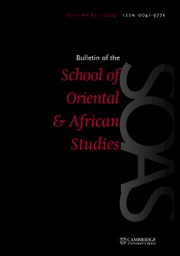Pre-modern Maghrebi calligraphy has been an outstanding issue for Arabic palaeography when compared with its Eastern counterparts. Through a thorough analysis of the script employed in a wide corpus of Maghrebi manuscripts, Umberto Bongianino has taken the first step towards filling what he describes as “a disconcerting gap” in the scholarship, while also managing to reconstruct the activities of the calligraphers, copyists, notaries, and secretaries who produced this corpus.
The palaeographic analysis of around 250 manuscripts and documents produced in the Islamic West between 270/883 and 600/1204 has allowed Bongianino to identify and detail various previously unknown Maghrebi sub-styles and calligraphic modes. This achievement is accompanied by a detailed analysis of the historical context, which facilitates a better understanding of how this family of scripts developed as an expression of Andalusi cultural identity. According to the author, this calligraphic tradition has its origins in the scribal milieu of the Umayyad dynasty, that is, between the late third/ninth and early fourth/tenth centuries. Moreover, Bongianino points to the influence of the Christian communities of Iberia – an important component of Andalusi society – and their Latin-Visigothic substrate as one of the reasons behind the specificity of the Andalusi (and later Maghrebi) scripts. If Bongianino is right, his assumption constitutes a great discovery, since to my knowledge Andalusi script has previously been classified as a sub-group of the Maghrebi calligraphic style, and not as the original source of the whole Maghrebi family of scripts.
The volume includes illuminating pictures of some of the manuscripts, highlighting the special features of the Maghrebi scripts under analysis, and is divided into five chapters.
The introduction, written in an inviting and engaging style, recreates the historical and social conditions under which ʿAbd al-Ḥaqq Ibn ʿAṭiyya (481/1088–541/1147), the last chief judge of Almoravid Almeria, finished his Fahrasa (index), a work in which he carefully listed all the masters from whom he had gained knowledge, along with the books they had written. Bongianino presents here the particular case of the codex ms. árabe 1733, preserved in the Royal Library of the Monastery of St. Lorenzo in El Escorial (Madrid), which contains Ibn ʿAṭiyya's Fahrasa. According to him, this book is an example of the extent to which most of the preserved Maghrebi manuscripts have until now remained “misdated, misrepresented and misunderstood”. He likewise demonstrates that it is not an autograph item as previously thought, shifting the focus from the writing to the copying.
After the introductory chapter, in which Bongianino denies the Tunisian origin of the Maghrebi scripts, in chapter 2 he brings to the table the earliest evidence demonstrating the appearance of round scripts in an Andalusi context, with the emergence of two varieties and the possible influence of Visigothic Latin.
Chapters 3 and 4 offer a description of the evolution and spread of these Maghrebi (formerly just Andalusi) round scripts from the fifth/eleventh century onward, and their new features, which gradually became differentiated by geographical area. This, he argues, signals a professionalization and specialization of the copyists, and of calligraphy itself.
By employing prestigious Andalusi secretaries and calligraphers the Berber dynasties, and the Almohads in particular, found a means of legitimation while at the same time spreading the Andalusi script all across North Africa from the sixth/twelfth century onward. However, Bongianino has yet to offer an explanation for the exceptional development that took place afterwards, a subject on which he expresses his intention to continue investigating.
In the fifth and final chapter, the author includes an analysis of Quranic manuscripts that illustrate the definitive rupture with the Kufic style that had traditionally been employed to copy the Quran, alongside an examination of ten chancery documents.
In conclusion, Bongianino points to Ibn Khaldun's insistence, in his Muqaddima, on the “idiosyncratic, self-contained nature of the Andalusi scribal milieu under the Umayyad dynasty” as a possible explanation for the birth of the Maghribi family of scripts:
With the Umayyads, al-Andalus became a separate political entity. They developed distinctive conditions as to sedentary culture, the crafts, and writing styles. As a result, their Andalusi script, as it is known today, also became special.
Finally, several useful appendices complete the volume, namely a list of the manuscripts considered, the works they contain, the copyists, the places where the manuscripts were copied, and remarkable colophons and notes, as well as an extremely useful glossary containing the codicological terms employed throughout the book. If I had to find one fault, it might be that the index of copied works is organized alphabetically by genre (Adab and Botany; Adab and Meteorology …), whereas perhaps it would have been more practical to organize them simply by title, indicating the genre at the end. However, this probably responds to Bongianino's aim of linking the diverse genres to one or another variety of script.
This monograph on the manuscript tradition of the Islamic West is an invaluable contribution to the field of Islamic intellectual and cultural history. By focusing not just on the content of the texts, but also (and mainly) on the material aspects of the artefacts wherein those texts were copied, Bongianino provides the reader with a framework that allows for a better understanding of the written production, and of the way in which those works were written, read, transmitted, taught, and preserved – a relatively overlooked aspect in the history of the Muslim communities of this geographic area. In brief, this publication will surely become a definitive reference work in the field, preparing the ground for future research.



